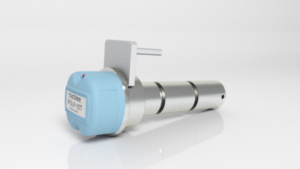Recap of Use Cases for Load Pins Webinar
 Interface load pins continue to grow in demand as an easy to integrate and cost-effective sensor solution for many diverse applications as direct replacements for clevis or pivot pins. Most commonly used for lifting and rigging mechanisms in construction, structural assemblies and moving devices, load pins are typically used in rope, chain and brake anchors, sheaves, shackles, bearing blocks and pivots.
Interface load pins continue to grow in demand as an easy to integrate and cost-effective sensor solution for many diverse applications as direct replacements for clevis or pivot pins. Most commonly used for lifting and rigging mechanisms in construction, structural assemblies and moving devices, load pins are typically used in rope, chain and brake anchors, sheaves, shackles, bearing blocks and pivots.
To provide greater insights and answers to questions asked to our force measurement application experts, Interface hosted a ForceLeaders Forum event, Use Cases for Load Pins. The event, now archived on our YouTube channel, highlights why more and more industries are using load pins include for projects related to infrastructure, aerospace and defense, industrial automation, manufacturing, maritime, and in energy markets such as oil and gas.
Regional Sales Director Elliot Speidell covered a series of topics in this live event, which included:
- Who is Using Load Pins and Why?
- Models and Design Aspects of Load Pins
- Integration Considerations
- Installation Factors
- Load Pin Capabilities including Wireless Features
- Standard and Customization Options
- New-Found Applications Using Load Pins
- Differences and Advantages
- FAQs
WATCH NOW: THE ‘USE CASES FOR LOAD PINS’ ON-DEMAND EVENT
This webinar covers great detail in installation tips, integration considerations, design features and more. Here are just a few highlights from the webinar.
Load pins measure tensile and compression forces via strain gages that are installed within a small bore through the center of the pin. Two grooves are machined into the outer circumference of the pin to define the shear planes, which are located between the forces being measured. They are made of rugged stainless-steel material and are commonly used for safety applications. They are easy to retrofit and inherently waterproof by design, making it useful in submersible and adverse environmental conditions. Load pins have multiple bridge options and can be cabled or wireless.
 One of the most important features and distinctions of a load pin is the ability to customize the design to fit the application. Due to the nature of requirements and fact most load pins are custom solutions, they often do not have any charges for NRE. Contact our application experts to learn of the possibilities and design options.
One of the most important features and distinctions of a load pin is the ability to customize the design to fit the application. Due to the nature of requirements and fact most load pins are custom solutions, they often do not have any charges for NRE. Contact our application experts to learn of the possibilities and design options.
When installing a load pin various factors need to be considered which can influence the performance or accuracy. The fit of the pin within a structure is important to the overall performance of the load pin. For an optimal performance, an H7/g6 clearance would normally be recommended; however, this is not always achievable in the field and some slight loss of repeatability and linearity can normally be tolerated to achieve an “easy to fit” requirement.
Load pins are a great sensor to use in a “smart system” application for automated feedback, alarms, and real-time notifications. They integrate with all types of instrumentation, including digital output options. Though they are simple and easy to use, they are known for hardiness. It is important to understand they are not “precision performance” devices, they are designed for standard force measurement applications that require immediate feedback. Also, they are easy to incorporate with existing actuator set-ups.
Watch the event to learn more about the questions engineers and testing experts asked us about using load pins. For specific industry examples, from bridges to crane regulation use, tune into the recorded event or visit our application notes here. Need us to get started on a custom design? Contact us today.









